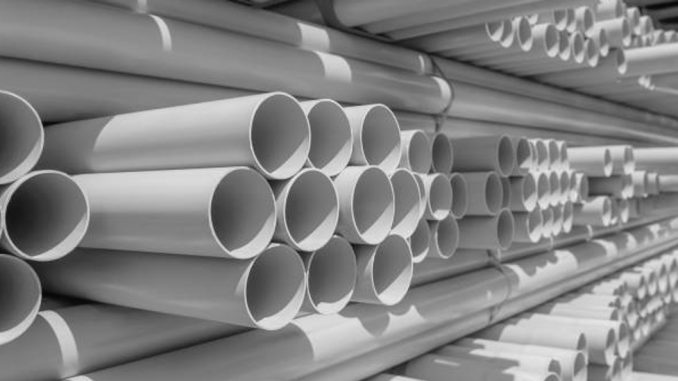
Two from the top please, Rachel. Like a game of Countdown, there are a lot of letters involved in distinguishing the three main types of plastic piping and this can lead to a lot of head scratching with people asking just what is the difference between PVC, UPVC and CPVC pipe?
Luckily, it is far easier to understand the pros and cons of PVC, UPVC and CPVC pipe than it is to come up with an eight letter word as the clock counts down your 30 seconds.
PVC and UPVC pipe
Forget CPVC for a minute as are focussing on the difference between PVC and UPVC pipe, which it turns out is not very much at all.
PVC stands for polyvinyl chloride – no Susie Dent needed to explain how they came up with that abbreviation – and it has been used to make pipes since the middle of the 20th century.
Of course, pipes are not the only structures which PVC is fashioned into. Doors, chairs, furniture, window frames, the list is pretty exhaustive.
UPVC is a close cousin of PVC with the only difference between the two being that PVC contains BPA and phthalates, two plasticisers which give it greater flexibility.
Without those, UPVC is a much more rigid material, often imaginably referred to as rigid plastic. The ‘U’ at the start of UPVC stands for unplasticised, reminding everyone that UPVC has no additional chemicals.
UPVC offers superior resistance to chemical erosion, UV rays and weather. It is a smoother plastic, enabling water to pass through it without as much turbulence as happens in PVC pipes.
For rigid pipes in harder wearing environments such as industry, UPVC is the preferred type of plastic. When flexibility is required, such as in bathroom sink piping or gutters, then PVC provides the best option.
PVC and CPVC pipe
Just like UPVC, CPVC is a close cousin of PVC and the difference between the pipe is therefore minimal. Whereas PVC is altered via plasticisers, CPVC is changed by a free radical chlorination reaction that increases its chlorine content.
The purpose of this modification is that it allows CPVC to carry water at higher temperatures. PVC normally has a maximum operating temperature of 60℃ compared to CPVC which can go as high as 93℃.
This makes CPVC more suitable for use in hot water systems. It is for this reason that CPVC pipe comes in sizes similar to copper pipe used in plumbing systems. To further distinguish between the two, CPVC is grey in coloured. PVC meanwhile is white and larger.
When putting together plastic pipe, glues and solvents are used to connect sections of pipe. That is where one other difference between PVC and CPVC comes in; they both require different cements to bond and should therefore not be used together.
The fact that plastic piping is connected via cements and solvents is arguably its worst attribute. These bonds can begin to break down after a while, necessitating PVC, CPVC and UPVC pipe repair applications to be required.
Other differences between PVC, UPVC and CPVC
There is one other difference between PVC, UPVC and CPVC pipes that is increasingly being taken into consideration before deciding which is the most suitable for a specific application – sustainability.
The world as a whole is looking to become greener and better protect the planet and the pipe and water industries know that there is much more they could be doing.
Whilst Greta Thunberg is never likely to approve any type of plastic pipe, UPVC is at least recyclable and energy efficient, making it a more environmentally friendly option than PVC and CPV.

Leave a Reply